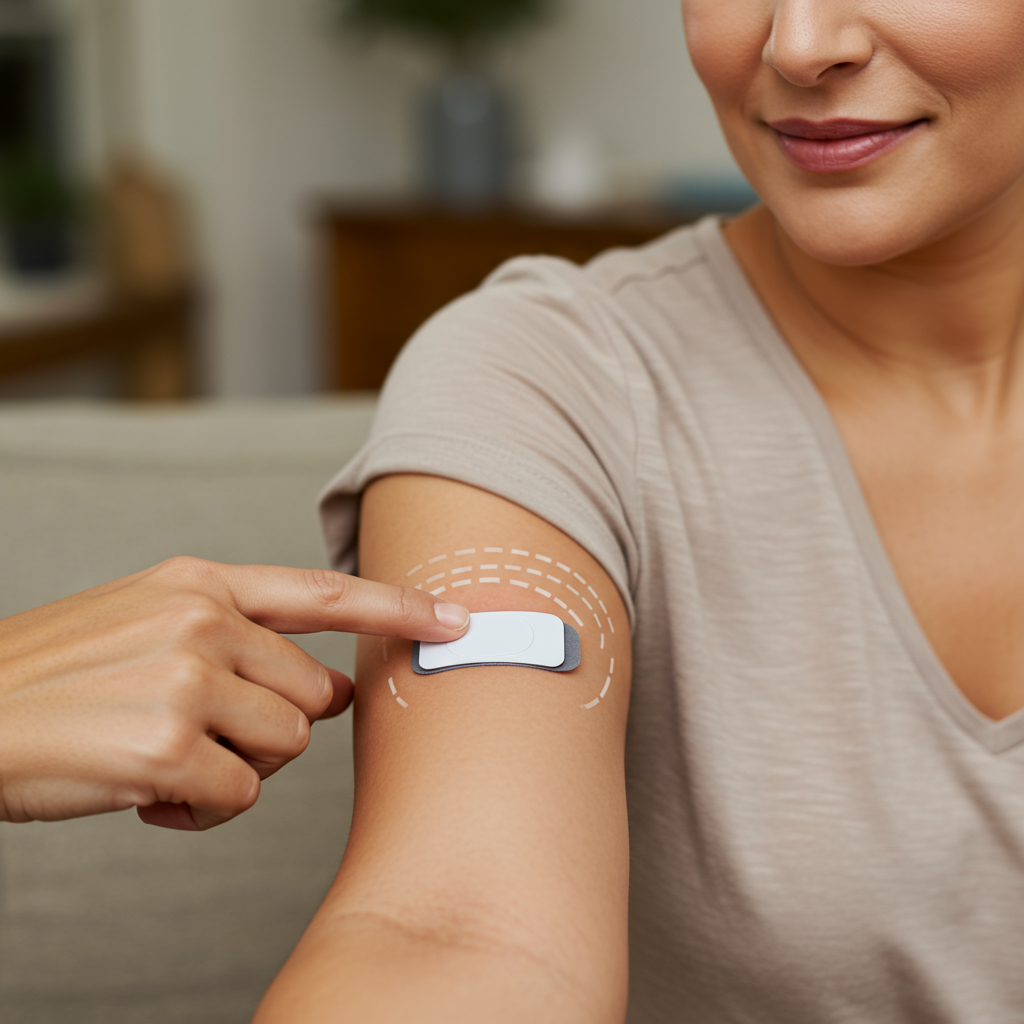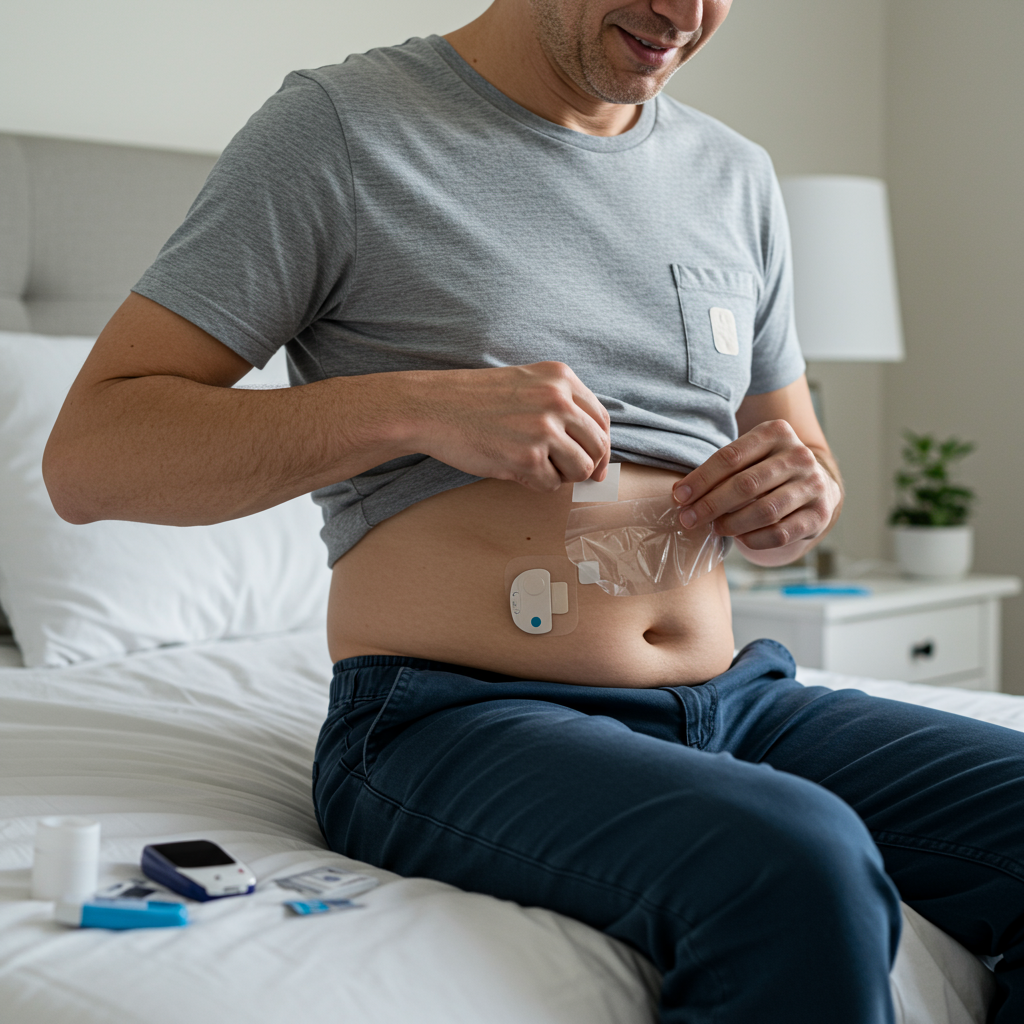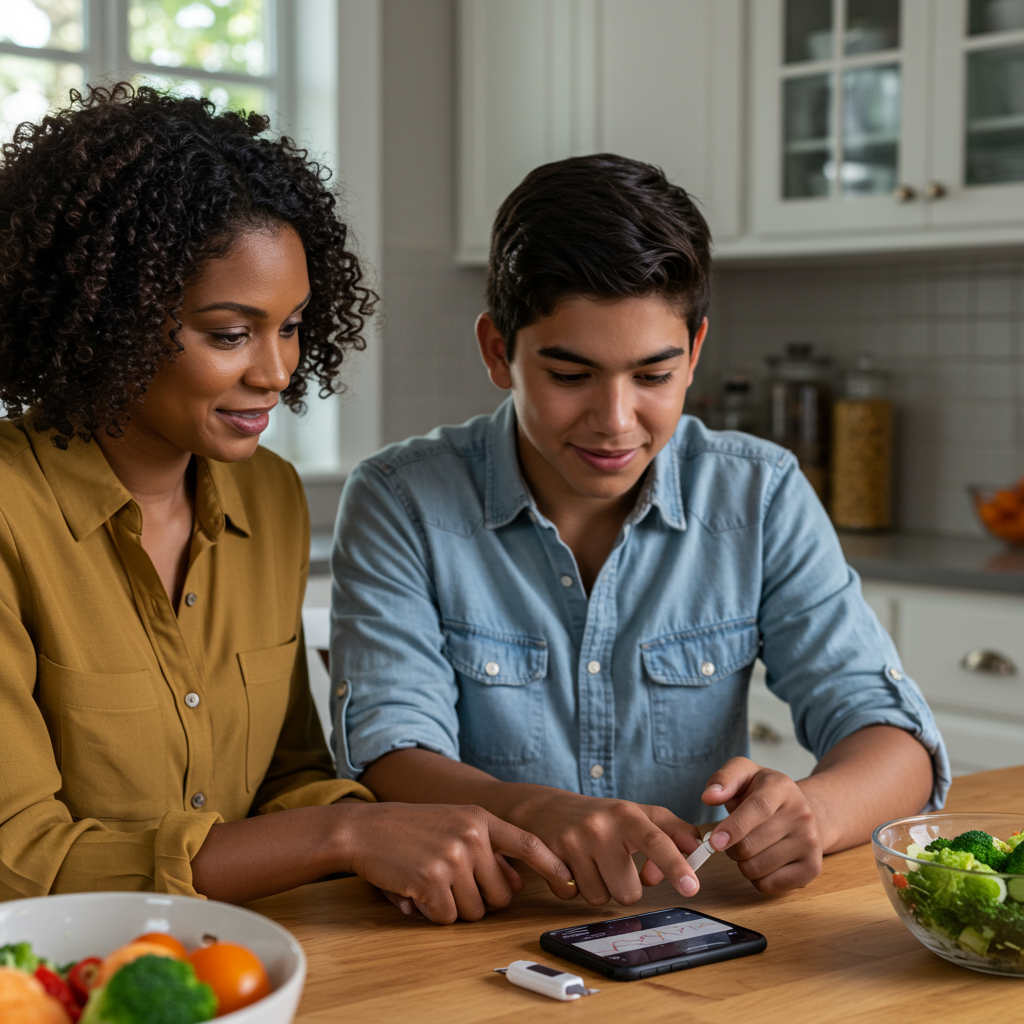Getting the Most from Your CGM: Navigating Common Pitfalls and Their Solutions
Continuous Glucose Monitors (CGMs) have revolutionized diabetes management, offering real-time insights into glucose patterns that finger pricks simply cannot provide. As someone who has both worked with countless patients using these devices and wear one myself, I've seen firsthand how transformative they can be—when used correctly. Yet even the most sophisticated technology is only as effective as the person using it. Let's explore some common CGM challenges and practical solutions to ensure you're getting accurate, actionable data.
Understanding Sensor Placement: Location Matters

One of the most frequent issues I observe in my practice relates to improper sensor placement. While manufacturers typically recommend specific areas like the back of the arm (for Freestyle Libre) or abdomen (for Dexcom), not all placement within these zones yields equal results.
Common Error: Placing sensors over muscle, near joints, or in areas with minimal subcutaneous fat.
Why It Matters: Sensors measure glucose in interstitial fluid, not blood. Areas with good blood supply but adequate fat tissue provide the most accurate readings. Placing sensors over muscle or near joints can lead to compression artifacts (false lows when pressure is applied) and movement-related inaccuracies.
Solution: Rotate sites within the recommended areas, focusing on spots with appropriate subcutaneous tissue. For many adults, the back of the arm (slightly offset from the midline), upper buttocks, or abdomen (at least 2 inches from the navel) typically work well. If you're lean, consider areas with relatively more subcutaneous fat. Remember that the same location may perform differently between individuals—pay attention to which sites give you the most consistent readings.
Calibration and Reference Points: Finding the Balance
The relationship between finger stick readings and CGM values often creates confusion and frustration.
Common Error: Calibrating too frequently or during periods of rapid glucose change.
Why It Matters: While calibration helps align your CGM with blood glucose values, excessive or poorly timed calibrations can actually decrease accuracy. Modern CGMs require minimal calibration, and some are factory-calibrated to require none at all.
Solution: For systems requiring calibration, follow these principles:
- Calibrate only when your glucose is stable (flat line for at least 15-20 minutes)
- Avoid calibrating after meals, during exercise, or when arrows indicate rapid change
- Ensure your finger stick technique is proper (clean hands, adequate blood sample)
- For factory-calibrated systems like Dexcom G6 or newer Freestyle Libre models, resist the urge to calibrate unless you notice consistent discrepancies
Remember that CGMs measure interstitial glucose, which lags behind blood glucose by about 10-15 minutes during rapid changes. A difference between your meter and CGM during these times is normal, not necessarily an indication of inaccuracy.
Overcoming Adhesive and Skin Issues: Longevity Without Irritation
Common Error: Applying sensors to unprepared skin or using inadequate barrier methods.
Why It Matters: Premature sensor detachment wastes expensive sensors and creates gaps in data. Conversely, skin irritation can make the CGM experience uncomfortable or even untenable for some users.
Solution: Consider this tiered approach:
-
Basic preparation: Clean the application site with alcohol and allow to fully dry before application. Avoid lotions or oils in the area.
-
For adhesion problems: Apply a skin adhesive like Skin-Tac™ before sensor placement, or use over-patches designed specifically for your CGM model.
-
For skin irritation: Use barrier films like Cavilon™ or hydrocolloid patches between your skin and the sensor adhesive. Some users find success with "cutting out" the center of a barrier patch to allow the sensor filament direct contact with skin while protecting surrounding tissue.
-
Environmental factors: Be mindful of excessive sweating, swimming, or humid environments which can compromise adhesion. Some users benefit from additional protection in these situations.
The optimal solution often involves experimentation to find what works for your specific skin type and lifestyle.

Interpreting Data Responsibly: Beyond the Numbers
The psychological aspect of CGM use is perhaps the most overlooked yet critical component of successful integration.

Common Error: Overreacting to data or developing "alert fatigue."
Why It Matters: Constant glucose monitoring can create anxiety when users respond to every fluctuation. Conversely, too many alerts can lead to ignoring potentially important information.
Solution: Develop a healthy relationship with your CGM data:
- Focus on trends rather than individual readings
- Customize alert thresholds to meaningful levels that require action
- Use time-in-range as your primary metric rather than focusing on occasional excursions
- Remember that perfect flatlines are neither necessary nor realistic—even non-diabetic individuals show glucose variability
- Schedule periodic "data reviews" rather than constantly checking readings
Remember that CGMs are tools for informed decision-making, not sources of judgment or validation.
By addressing these common challenges, you can transform your CGM from a potential source of frustration into an empowering tool for metabolic health. As with any technology, the learning curve may seem steep initially, but the insights gained from proper use are invaluable for long-term health optimization.
References
-
Petrie JR, Peters AL, Bergenstal RM, Holl RW, Fleming GA, Heinemann L. Improving the clinical value and utility of CGM systems: issues and recommendations. Diabetologia. 2017;60(12):2319-2328.
-
Forlenza GP, Argento NB, Laffel LM. Practical Considerations on the Use of Continuous Glucose Monitoring in Pediatrics and Older Adults and Nonadjunctive Use. Diabetes Technol Ther. 2017;19(S3):S13-S20.






